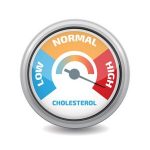 The beginning of April marks the beginning of a new season: Spring. Here at Bel Marra, we love to promote health and well-being throughout every season, helping you feel and perform to the best of your ability. As we say goodbye to the coldness of winter and say hello to warmer temperatures, our weekly health roundup will give you a leg up on your road to health. Our articles touch on topics dealing with high cholesterol and familial hypercholesterolemia. We also have articles on otosclerosis, ostospongiosis, eye strokes, retinal artery occlusion, menopause myths, hearing loss, and the best energy foods for your reading pleasure.
The beginning of April marks the beginning of a new season: Spring. Here at Bel Marra, we love to promote health and well-being throughout every season, helping you feel and perform to the best of your ability. As we say goodbye to the coldness of winter and say hello to warmer temperatures, our weekly health roundup will give you a leg up on your road to health. Our articles touch on topics dealing with high cholesterol and familial hypercholesterolemia. We also have articles on otosclerosis, ostospongiosis, eye strokes, retinal artery occlusion, menopause myths, hearing loss, and the best energy foods for your reading pleasure.
Stop believing these common health myths
We are all different—from health advantages and predispositions we inherit from our parents to lifestyle choices we make every single day, there are so many factors that shape us and our health. Take menopause, for example. Until a woman actually enters this time of transition (which, by the way, is a completely normal and natural stage), she is faced with all sorts of misleading information that paints a pretty gloomy picture of what life is going to be like after menopause. Hot flashes, night sweats, sleep troubles, intimacy issues… How do you deal with it all at once? The good news is, you don’t.
Advertisement
Let’s look at some of the myths about menopause and the truth behind them. As you know, knowledge is power—the more you understand your symptoms, the easier it is to manage them. Continue reading…
 Eye strokes (retinal artery occlusion): Symptoms, causes, and treatment
Eye strokes (retinal artery occlusion): Symptoms, causes, and treatment
When people think of strokes, they immediately think of an abnormality occurring in the brain. However, it can happen in the eyes too. This type of stroke is referred to as retinal artery occlusion.
A typical stroke affecting the brain can either be ischemic or hemorrhagic. Both have the same end result—cell death—but occur differently. Hemorrhagic stroke occurs due to an aneurysm in the brain rupturing, causing blood to escape and decreased perfusion to the area of the brain affected. Ischemic stroke occurs due to the blockage or narrowing of the blood vessels supplying the brain with vital nutrients and oxygen—therefore, the affected area becomes starved of blood, leading to a stroke. Continue reading…
 Is high cholesterol hereditary? Familial hypercholesterolemia symptoms and treatments
Is high cholesterol hereditary? Familial hypercholesterolemia symptoms and treatments
Most people are aware that too much cholesterol is dangerous and what we eat is a contributing factor, but people are now wondering if it can be hereditary. The answer is yes: it’s called familial hypercholesterolemia.
Perhaps you have been watching what you eat but it doesn’t seem to make a difference. In other words, you may be vigilant about how much bad cholesterol you consume through foods yet still battle with high cholesterol.
Familial hypercholesterolemia is a genetic disorder that causes individuals to have higher than normal levels of low-density lipoproteins (LDL), which are considered bad cholesterol. They are bad because they contribute to health problems like heart disease. In fact, research suggests that familial hypercholesterolemia is responsible for up to 10 percent of early onset heart disease. Continue reading…
 Eat this, get more energy
Eat this, get more energy
Spring is a time of renewal and awakening—it is the season for clearing up the cobwebs and paving the way for new beginnings. No wonder we tend to make more plans and try to be more active—there’s so much to do. But this is where the problem arises: we won’t have enough energy to fuel everything we want to do.
The cold season may be over, but the aftermath of winter still lingers. If you want to escape that feeling of being drained of energy all the time, perhaps it’s time for a seasonal menu change. Continue reading…
 Otosclerosis (or otospongiosis) hearing loss: Symptoms, causes, and treatments
Otosclerosis (or otospongiosis) hearing loss: Symptoms, causes, and treatments
Otosclerosis—also known as otospongiosis—is a condition that affects the ears where an abnormal growth of bone forms around the stapes bone, a tiny bone in the middle of the ear. This bone is then stuck in place, and for the ear to work properly, it needs to be able to move freely. The growth also impedes on the function of the other parts of the ear, sometimes resulting in severe hearing loss.
Advertisement
Ears have three parts: the outer ear, the middle ear, and the inner ear. Sounds enter the outer year, where they pass through into the middle ear, causing the eardrum to vibrate. The vibrations are transmitted through ossicles—tiny bones in the ear—to the inner ear, where they move through tiny hair cells in the cochlea. The hair cells convert the sound waves into nerve impulses which then travel to the brain.
As you can see, hearing is quite a complex function. If any one step in the process is impeded, the entire process goes wrong, manifesting as partial or complete hearing loss. Continue reading…
Related: How long does menopause last?
